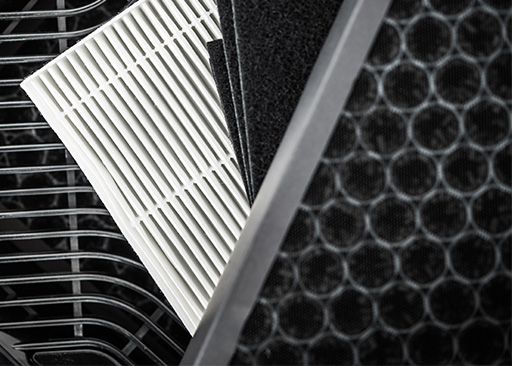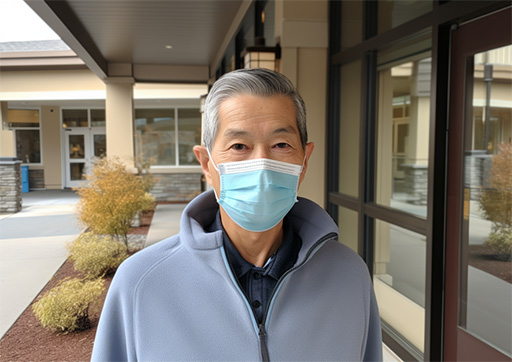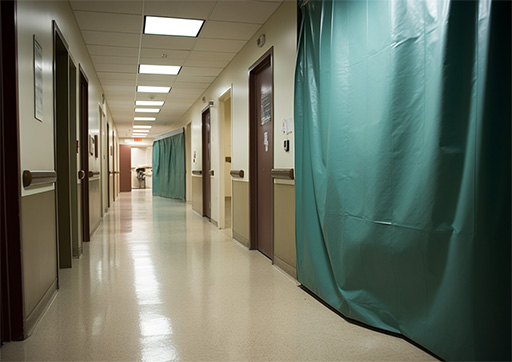What is a Negative Air Pressure Room?

By keeping the room pressure lower inside the room, released contaminants will be drawn inward and contained rather than being able to travel through ducts or cracks and enter other rooms. They are used in various settings, including healthcare facilities to isolate patients, laboratories, and manufacturing plants.
Types of Isolation Rooms
There are three types of negative air pressure rooms: isolation, cleanroom, and containment.
Negative pressure Isolation rooms keep patients that are contagious from spreading their illnesses to others. However, patients may feel lonely in these rooms. To help with this, many isolation rooms have televisions and communication systems that allow patients to stay in contact with family and friends.
The rooms typically have a private bathroom, shower, sink, and toilet. Patients in isolation rooms must wear masks at all times when they are outside of their rooms. The rooms have a window with a view of the outside, but patients are not allowed to open the window or have visitors. Meals are brought to patients in their rooms, and all trash is removed from the room by staff wearing Personal Protective Equipment (PPE).
Cleanrooms are used in various settings, including hospitals, pharmaceutical companies, and microelectronics factories. They are designed to keep particulate matter from contamination or devices assembled inside them.
The most important factor is the control of airborne particulates. Particulates can come from many sources, including people, equipment, and dust. Strict rules on entry and exit are necessary to keep particulate levels low. Air filtration systems also play an essential role. The type of filter used depends on the necessary level of cleanliness. A HEPA filter (high-efficiency particulate air) and ULPA (ultra-low particulate air) filter are common.
Containment rooms are used when working with environmental hazards or infectious germs that could harm people if they come into contact with them. These rooms have unique ventilation systems that ensure that any harmful particles stay contained.
The walls and ceilings of these rooms are typically made of materials that can resist the penetration of airborne particles, and the doors are usually equipped with seals that prevent air from escaping.

What About Positive Pressure?
Positive pressure rooms protect high-risk patients with weak immune systems from exposure to infectious agents. The higher pressure is so that only filtered, clean air flows into the room and prevents contaminated air from entering. Any air that does escape from the positive pressure room is quickly diluted with outside air, further reducing the risk of infection.
Negative Pressure Guidelines
Best practice guidelines for lower air pressure rooms include ensuring that the room is well-ventilated and that the airflow is directed away from vulnerable patients and hospital staff. It is also essential to monitor the air quality in the room and keep a log of the readings. Air quality monitors should be placed strategically around the room to take readings regularly.
Testing and Monitoring Negative Air Pressure Rooms
They are tested by measuring the amount of airflow into and out of the room. The room is considered negative if more air is flowing out than in. The airflow can be measured with a manometer, which measures the difference in pressure between two points.
Potential Risks and Safety Concerns
Negative air pressure rooms have the potential to cause several risks. One risk is that without proper maintenance, they can allow excess contaminants to enter the room and come into contact with patients, staff, or other healthcare workers leading to infections.
Another risk is that they can cause patients to feel isolated and claustrophobic. This can be especially difficult for patients who are anxious or scared about their health condition. They also can potentially increase noise levels, which can be disruptive.
Cooling and Heating Negative Air Pressure Rooms

To heat, use a particular type of heater designed for this purpose. These heaters are powered by electricity and use resistance coils to generate heat. The coils are placed in the walls or floor of the room, and the heat generated by them is used to warm the air in the room.
Common Myths
- Myth: Negative pressure rooms are only for infection control.
- Fact: While negative air pressure rooms are often used for highly infectious illnesses, they can also be used for other patients who require isolation, such as those recovering from surgery.
- Myth: Negative pressure rooms are challenging to maintain.
- Fact: Maintaining a negative air pressure room is not difficult. The main thing to remember is that the door must remain closed at all times to keep the negative air pressure in the room.
- Myth: Negative pressure rooms are expensive to build.
- Fact: Building a negative air pressure room does not have to be expensive. Many hospitals and clinics use existing spaces and add an exhaust system to create negative pressure.
- Myth: Negative pressure rooms are physically uncomfortable for patients.
- Fact: Patients in negative air pressure rooms are not usually aware of the pressure difference. They may only notice when the door is opened and outside air rushes into the room.
When to Use BioScan
BioScan can be performed while a person is in a negative air pressure room to detect potential health problems that may not appear in a non-pressurized room. This type of scan can be helpful for people with conditions that may not be assessed by traditional means.
The individual being scanned must enter an inflatable chamber, which is then sealed shut. The chamber is then connected to a machine that pumps out the air, creating negative pressure. As the pressure decreases, the person’s body is forced to expand slightly.
